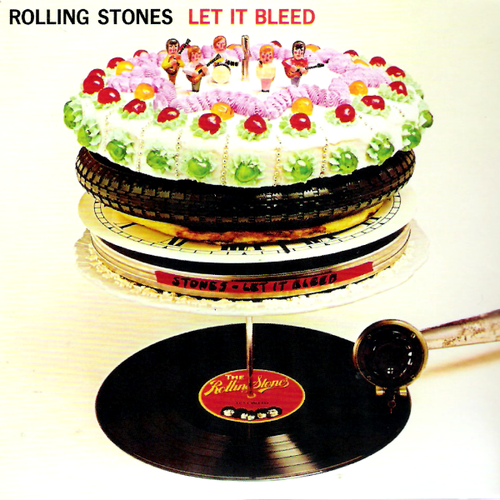5. The Rolling Stones – Let It Bleed

Again, I’ve obviously always been familiar with the Stones and liked a lot of the Stones, but it’s only in the last couple of years that I’ve really grown to appreciate that late 60s, early 70s period, and listened more intently I suppose. And Let It Bleed for me is just the best Stones album. I know a lot of people like Exile… and some of the others, but I don’t know, when you’ve got an album with ‘Gimme Shelter’ and ‘Midnight Rambler’ and ‘You Can’t Always Get What You Want’ and ‘You’ve Got The Silver’, I mean there you go, you’ve got four great songs to start with. They mixed up the whole country thing with the blues thing and they still had a bit of the pop thing going on, and I just like the combination of all those styles on that record. I think there was a tendency later on for the Stones to become a bit of a caricature of themselves, which is understandable when a band has been together for so long, but I think that this was maybe the first album where they really broke away from being a pop band. I don’t know what album was before this, but I think this was the one where they first went quite rootsy. And there are rumours that Gram Parsons is on this record too, though he’s not credited. I think at the time Gram Parsons was quite good mates with Keith, and was showing him new tunings and different kinds of music, and I think that’s all there and had an influence on this record.
No-one can dislike ‘Gimme Shelter’. The Sisters had just recorded their version when I joined [on the B-side of the ‘Temple Of Love’ 12” single]. When I went to see them for the first time Andrew gave me a copy of the 12”, and I thought ‘Temple Of Love’ was alright, but then I turned it over and ‘Gimme Shelter’ was the first track and I thought oh yeah, I like this, that was what sold me on the idea of joining the Sisters: ‘Gimme Shelter’! So I always enjoyed playing that one live.
For anyone who’s interested in culture and history, the end of the 60s is still a fascinating time. There’s actually a song on the new album called ‘The Girl In The Fur Skin Rug’ which deals with that, the whole death of the dream at the end of the 60s. And that’s obviously referring to Marianne Faithfull, but that’s just a metaphor, really. And they’re still doing their thing. I haven’t seen them play live or anything; I don’t know if I’d fancy it these days, to be honest. I’ve seen Shine A Light [Martin Scorsese’s 2008 documentary about the band], which has more recent live stuff, the last ten years or so, and I don’t know, it’s more about showbiz now. There’s that 1972 film of them on tour which is great; I did watch the documentary Crossfire Hurricane, which I thought was great, there’s some great stuff there.
The thing about Jagger is that there’s so many books written about him and stuff, and the Stones, but he’s largely impenetrable. You still don’t get any firm idea of what kind of person he is. Whereas with Keith, you know exactly what kind of person he is. And that’s quite fascinating to me; to be such a publically known figure, but yet on a personal level not have very much known about you. I have a friend who played with Jagger for three or four years, and he probably knows him as well as anyone, and he says he’s like a chameleon. He blends in with whatever and whoever is around him. And the guy is obviously super-intelligent, both academically and in an everyday life way. I just find all that quite fascinating, really.


